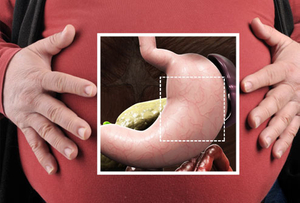Teens usually don’t get weight loss surgery unless they’re extremely obese, with a body mass index (BMI) of at least 35, and with a weight-related condition.If you’re thinking about it, talk to your doctor about whether it’s a good option for you.
4 Types of Weight Loss Surgery
When you get weight loss surgery, your surgeon makes changes to your stomachor small intestine, or both. Here are the four methods surgeons typically use:
Gastric Bypass: Your doctor may call this “Roux-en-Y” gastric bypass, or RYGB. The surgeon leaves only a very small part of the stomach (called the pouch). That pouch can’t hold a lot of food, so you eat less. The food you eat bypasses the rest of the stomach, going straight from the pouch to your small intestine. This surgery can often be done through several small incisions using a camera to see inside (laparoscope). Doctors can also perform a mini-gastric bypass, which is a similar procedure also done through a laparoscope.
Adjustable Gastric Band: The surgeon puts a small band around the top of your stomach. The band has a small balloon inside it that controls how tight or loose the band is. The band limits how much food can go into your stomach. This surgery is done using a laparoscope.
Gastric Sleeve: This surgery removes most of the stomach and leaves only a narrow section of the upper part of the stomach, called a gastric sleeve. The surgery may also curb the hunger hormone ghrelin, so you eat less.
Duodenal Switch: This is complicated surgery that removes most of the stomach and uses a gastric sleeve to bypass most of your small intestine. It limits how much you can eat. It also means your body doesn’t get as much of a chance to absorb nutrients from your food, which could mean you don’t get enough of the vitamins and minerals you need.

Electric Implant : The Maestro Rechargeable System works like a pacemaker to deliver electrical pulses to a nerve between the stomach and the brain , called the vagus nerve. This nerve tells the brain when the stomach is full. The device is implanted in the abdomen and has a remote control that can adjust it from outside the body.
With any type of weight loss surgery, you still must focus on eating a healthy diet and becoming more active as part of your lifestyle.
Benefits of Weight Loss Surgery
After weight loss surgery, most people lose weight for 18-24 months. At that point, many people start to regain some of their lost weight, but few regain it all.
If you had any medical conditions related to obesity, those usually improve after weight loss surgery. Some conditions, such as diabetes, can improve quickly. Others, such as high blood pressure, may take a little longer.
Risks and Side Effects
The most common side effects include nausea, vomiting, bloating, diarrhea, excessive sweating, increased gas, and dizziness.
Weight Loss Surgery: What to Expect
Start
Serious side effects can include bleeding, infection, leaks from the places where your stitches are, and blood clots in the legs that can move to the heart and lungs. Most people don’t get any of these.
Long-term problems following weight loss surgery depend on which type you have. One of the most common issues, especially with gastric bypass, is “dumping syndrome,” in which food moves too quickly through the small intestine. Symptoms include nausea, weakness, sweating, faintness, diarrhea after eating, and not being able to eat sweets without feeling very weak. It can occur in up to 50% of people who had weight loss surgery. But avoiding high-sugar foods and replacing them with high-fiber foods may help prevent it.
Gallstones can form when you lose a lot of weight quickly. To help prevent them, your doctor may recommend taking supplemental bile salts for the first 6 months after surgery.
You’ll need to make sure you’re getting enough nutrients, too, especially if the surgery made it harder for your body to absorb nutrients from food.
Because rapid weight loss and nutritional deficiencies can harm a developing baby, doctors often advise women of childbearing age who get weight loss surgery to avoid pregnancy until their weight becomes stable.








